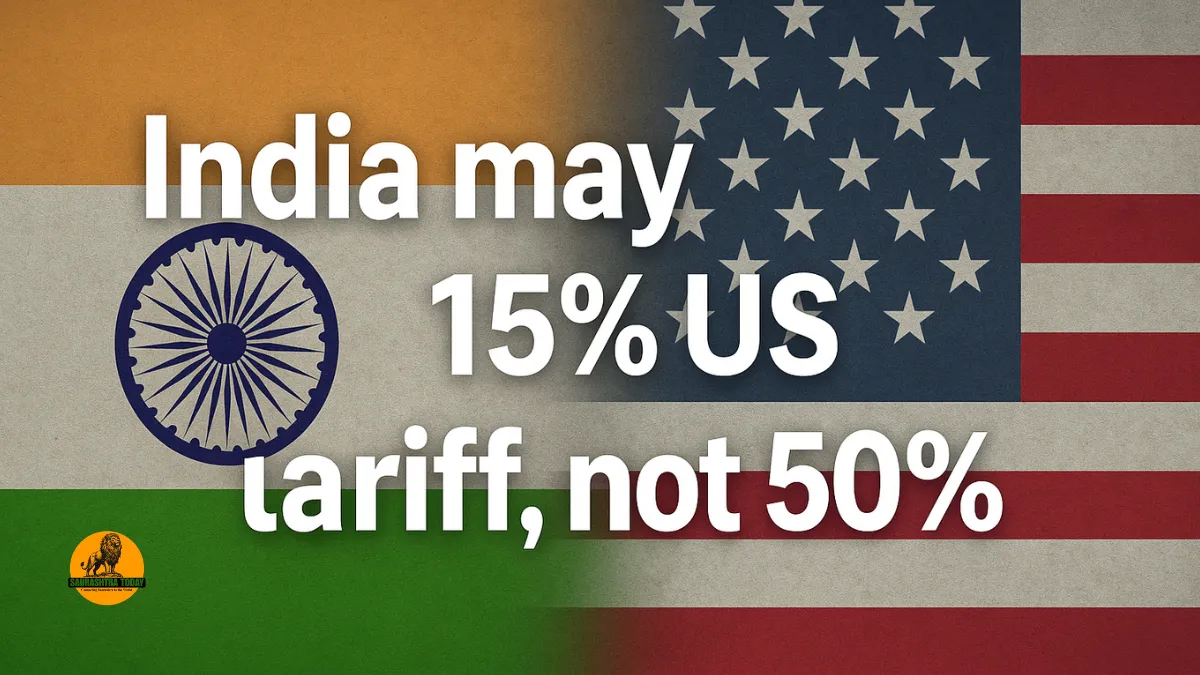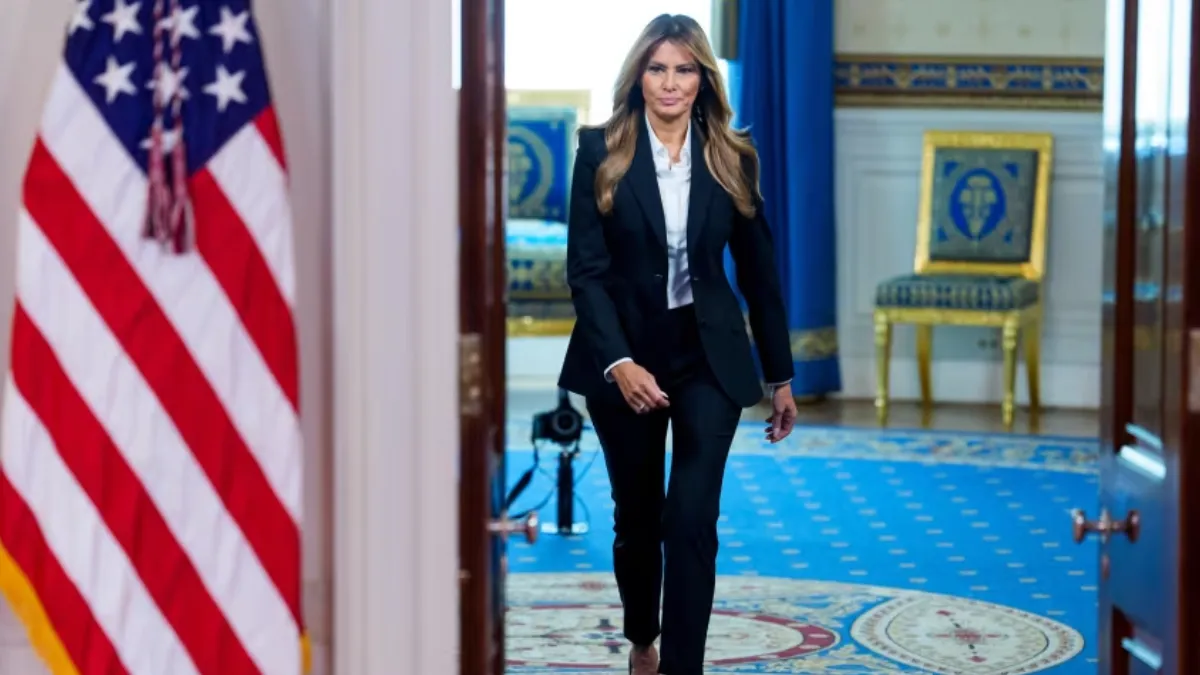A new chapter in the India–US trade relationship may be unfolding soon. According to recent reports, the United States is likely to reduce proposed tariffs on selected Indian goods from 50% to 15%, paving the way for a potential trade deal. Sources familiar with the negotiations say that energy and agriculture remain the most critical areas on the discussion table, and both sides are exploring practical compromises to move forward.
India Could Increase Imports of American Corn and Ethanol
Officials involved in the talks reveal that India may increase its purchase of non-GMO (genetically unmodified) American corn and ethanol as part of the broader agreement. The US side believes that India could gradually reduce its dependency on Russian crude oil, while simultaneously opening its market to more US farm and energy products.
Indian negotiators, however, have made it clear that the interests of Indian farmers will remain fully protected. According to the report, Indian policymakers expect that American agricultural products will be used mainly by the country’s fast-growing poultry, dairy, and ethanol sectors, ensuring minimal disruption to local crop prices.
At present, India imports about 500,000 tonnes of corn annually from the United States, a number that could rise significantly if the new trade deal is finalized.
US Pushes to Sell Premium Cheese in India
In addition to corn and ethanol, Washington is also eager to expand its premium dairy exports, particularly high-end cheese, to India’s growing urban market. However, Indian officials have firmly rejected any proposal to reduce the current 15% tariff on non-GMO corn, and are not yet ready to open the market for US premium cheese.
The US has been pressing India to allow greater access to these food items as part of a comprehensive trade package. Still, New Delhi is treading carefully, keeping in mind domestic sensitivities and self-sufficiency goals in the agricultural sector.
The Trump-Era Tariff Hurdle
The recent discussions stem from tariffs imposed during Donald Trump’s presidency, which significantly affected Indian exports. In April, the Trump administration had introduced a 25% import tariff on Indian goods, followed by an additional 25% penalty for India’s continued purchase of Russian crude oil. Combined, these measures created an effective 50% tariff on some Indian products entering the US market.
India currently sources around 34% of its crude oil from Russia, while only 10% comes from the United States. The high import duties imposed during the Trump era severely limited India’s export competitiveness in the US, affecting trade volumes and business sentiment.
Former Diplomat Says Deal Stuck Due to Trump’s “Ego”
Former Foreign Secretary Kanwal Sibal has commented that the long-awaited India–US trade deal remains on Trump’s desk, awaiting resolution. According to Sibal, India will not compromise its domestic interests but remains committed to treating the US as a priority trade partner.
He added that the main obstacle lies in Trump’s personal negotiating style, noting that the former US President often used pressure tactics with other nations such as the EU, Japan, and South Korea to finalize deals. “Trump wants a similar outcome with India,” Sibal explained, “but he knows it won’t be easy. That’s why he’s using a hot-and-cold approach.”
85,000 Crore Worth of Indian Exports Affected by Tariffs
The impact of these tariffs has been significant. Due to higher import duties and the penalties for Russian oil purchases, Indian exports worth nearly ₹85,000 crore (around $10 billion) have been adversely affected. The additional 25% retaliatory tariffs imposed by the US have particularly hit sectors like textiles, engineering goods, and agricultural exports.
Businesses across India have called for an early resolution, emphasizing that reduced tariffs would help restore trade momentum and attract more investments from US-based companies
50% Tariff Currently Applies to Indian Goods
The tariff escalation occurred in stages. On August 6, the Trump administration announced an additional 25% tariff on Indian imports, which came into effect on August 27. Earlier, on July 30, another 25% duty had already been imposed, citing India’s continued oil imports from Russia as the reason. Together, these created a combined 50% tariff burden on selected goods.
The official executive order issued at that time stated that these tariffs were a “necessary response to India’s purchase of Russian crude,” underscoring the geopolitical tension behind the trade dispute.
India–US Aim for $500 Billion Trade by 2030
Despite recent friction, both nations share a long-term goal of expanding their bilateral trade to $500 billion by 2030, up from the current $191 billion.
Data from India’s Commerce Ministry shows that between April and July 2025, Indian exports to the US grew by 21.64%, reaching $33.53 billion, while imports from the US increased by 12.33% to $17.41 billion.
The United States continues to be India’s largest trading partner, with total trade valued at $125.6 billion during this period. Notably, Indian exports to the US have been steadily increasing since April, signaling positive momentum despite existing tariff barriers.
Also read: Modi Russian Oil: India Prioritizes Consumer Interests Amid Trump’s Claim on Russian Oil
A Balanced Path Ahead
Analysts believe the current talks could mark a turning point in India–US trade relations. By reducing the tariff rate to 15% instead of 50%, the US would send a strong signal of goodwill, potentially encouraging India to further open certain sectors like energy, ethanol, and agricultural imports.
For Washington, the goal is to diversify trade relationships and reduce India’s dependence on Russia, while for New Delhi, the priority is to secure better market access for Indian goods and protect the livelihoods of local farmers.
If both nations succeed in finding middle ground, the deal could not only ease tariff pressures but also boost investment, technology exchange, and energy cooperation between the world’s largest democracies.
Also read: Trump Warns India Over Russian Oil: US Threatens Higher Tariffs Amid Crude Purchase Concerns
Global Implications of the India–US Tariff Adjustment
Economists point out that lowering the tariff to 15% would have positive ripple effects across global markets. It would stabilize supply chains disrupted by earlier trade tensions and encourage more US companies to manufacture and source from India, aligning with the global “China+1” strategy.
At the same time, Indian exporters would regain competitive pricing advantages in the American market, helping industries like IT hardware, textiles, pharmaceuticals, and auto components strengthen their foothold in North America.
Also read: PM Modi Diwali 2025: Prime Minister Celebrates Festival with Navy Aboard INS Vikrant
Conclusion: A Step Toward Economic Stability
The possible move from a 50% tariff to 15% is being viewed as a major diplomatic breakthrough in India–US relations. If finalized, the trade deal will not only restore business confidence but also underline the resilience of both democracies in navigating geopolitical and economic challenges.
While challenges remain, the optimism is clear:
India may face a 15% US tariff, not 50% — a shift that could reshape the economic partnership between the two nations and unlock billions in future trade potential.

















